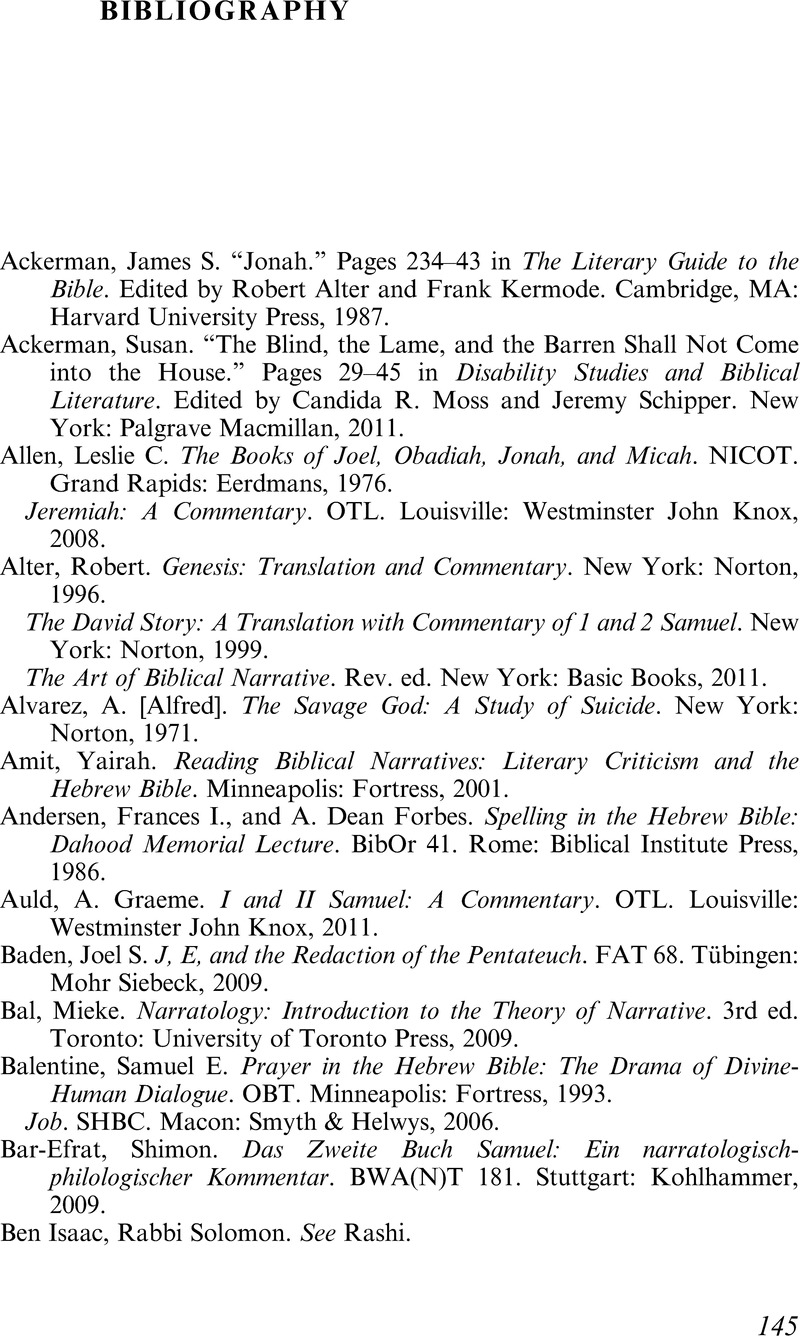Book contents
- The Death Wish in the Hebrew Bible
- Society for Old Testament Study Monographs
- The Death Wish in the Hebrew Bible
- Copyright page
- Dedication
- Contents
- Preface
- Acknowledgments
- Abbreviations
- 1 Introduction
- 2 Death Wish as Negotiation Strategy
- 3 Death Wish in Despair and Anger
- 4 Wishing Away One’s Birth
- 5 Death Wishes as Wishful Thinking
- 6 Wishing for Death or Fighting for Life?
- Bibliography
- Author Index
- Index of Scripture and Other Sources
- Index of Hebrew Words and Phrases
- Subject Index
- References
Bibliography
Published online by Cambridge University Press: 10 September 2021
- The Death Wish in the Hebrew Bible
- Society for Old Testament Study Monographs
- The Death Wish in the Hebrew Bible
- Copyright page
- Dedication
- Contents
- Preface
- Acknowledgments
- Abbreviations
- 1 Introduction
- 2 Death Wish as Negotiation Strategy
- 3 Death Wish in Despair and Anger
- 4 Wishing Away One’s Birth
- 5 Death Wishes as Wishful Thinking
- 6 Wishing for Death or Fighting for Life?
- Bibliography
- Author Index
- Index of Scripture and Other Sources
- Index of Hebrew Words and Phrases
- Subject Index
- References
Summary

- Type
- Chapter
- Information
- The Death Wish in the Hebrew BibleRhetorical Strategies for Survival, pp. 145 - 156Publisher: Cambridge University PressPrint publication year: 2021

